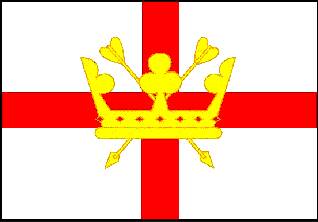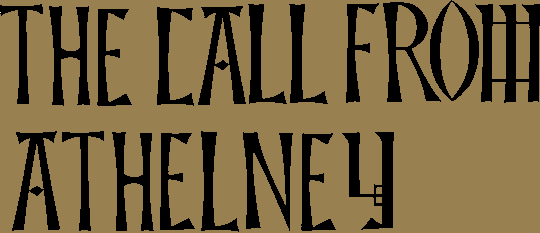 HOME PAGE HOME PAGE
|
|
THE
LIGHT FROM THE EAST:
ENGLAND'S FORGOTTEN PATRON-SAINT


'I
have vowed to live under Christ, to live under Christ alone, to reign
under Christ alone'.
St
Edmund, King and Martyr
Although St Edmund has been the patron-saint of England for well over
a thousand years, he has gradually been sidelined and today, in this land
without saints, he is almost forgotten. Indeed, ever since the definitive
establishment of the Normans in this country in the twelfth century, he
has come to be neglected. Just as the Normans attempted to replace popular
veneration for the Righteous English King Alfred with their fairy-tales
and myths of the Non-English King Arthur, so they also tried to replace
the memory of the English St Edmund with their crusaders' version of St
George.
Edmund
(Eadmund) was born on Christmas Day 841. Christian from infancy, in 856
he succeeded to the throne of what was perhaps the cradle of the English
Nation in East Anglia. During his brief reign he came to fight alongside
the future King Alfred in order to defend England from the invasions of
the pagan Vikings. In 869 a great Viking army landed on the shores of
his kingdom and Edmund marched out at the head of his army to defend the
realm. The King was defeated and captured. In captivity he was ordered
to renounce his faith and become a vassal of the heathen Danes, orders
which he stoutly rejected. Repeating the name of Christ with his heart
and his lips, he told them: 'Living or dead, nothing shall separate
me from the love of Christ'. He was tied to a tree, tortured by being
shot through with arrows, and then beheaded. His martyrdom took place
on 20 November 869 at Hoxne in High Suffolk and his body was buried in
a small wooden chapel nearby.
In
902 the relics, still incorrupt, were translated to Bedricsworth, at the
very crossways of the four counties of Eastern England - Norfolk, Suffolk,
Essex and Cambridgeshire. This town soon came to be called 'Edmundstowe',
'Edmundston' and finally was renamed Bury St. Edmunds. From this time
on St Edmund became a local, and soon, national patron. In 929 the humble
pilgrim King Athelstan founded a community to care for his shrine. In
945 another royal grandson of King Alfred, called Edmund, gave them further
lands. St. Edmund had become the ideal English hero, a king and a martyr.
The last purely English King of England, Edmund Ironside (+1014), was
also named after him. In 1020 a monastic church was built over his shrine
by King Canute and this was served by monks from Ely. Even after the final
Viking Invasion and Occupation of 1066, the martyr's relics were placed
in a refurbished shrine in a new church in 1095 and they continued to
be a place of national pilgrimage.
However,
in 1199 the French King of England, Richard I, was to call at the tomb
of St. George in Lydda, while on the Third Crusade. Invoking the saint,
he won a great victory and consequently placed himself and his army under
St. George's protection. St. Edmund, however, remained the national patron.
Thus in 1214 the future Magna Carta barons, in opposing Richard's younger
brother, King John, rode to Bury St. Edmunds on St Edmund's day to make
a pledge at the altar of St. Edmund to strengthen the national cause.
In 1215 the Magna Carta was signed by King John in the water meadows of
Runnymede. As a result of this historic event the motto of Bury St Edmunds
remains to this day: 'Shrine of a King, Cradle of the Law'.
However,
in the dynastic struggle after the hated King John's death in 1216, nearly
all St Edmund's relics were stolen by French knights in 1217. They were
taken to Toulouse in France and here they remained until 1901. The first
consequence of this loss was that three years later, in 1220, St. George,
already the personal patron of the sovereign, was inserted in the national
calendar by Richard I's nephew, Henry III (1216-1272). Although the banner
of St. Edmund was still carried by English forces in battle, by the time
of Edward I (1272-1307) it had been joined by the banner of St. George.
The
eclipse of St. Edmund continued in the reign of Edward III (1327-77) with
the founding of the Order of the Garter dedicated to Our Lady and St.
George. The English veneration of kingship allowed St. George to usurp
the national patronage, although his title was never patron but 'specyel
protectour and defendour of this royaume' (special protector and defender
of the realm). However, even as late as the reign of Richard 11 (1377-99),
a fine representation of St. Edmund as a national patron was made in the
Wilton Diptych. In this he was accompanied by Edward the Confessor and
St. John the Baptist as personal patrons, and there was still no sign
of St. George.
Although
in the reign of Henry VII (1457-1509), St. George was still only designated
'protector of the realm', it was under the Machiavellian tyrant Henry
VIII (1491-1547) that St. Edmund became totally eclipsed. Henry actually
removed St Edmund's name from the litanies of saints venerated in England
and in 1539 he had the monastery at St Edmundsbury dissolved. Indeed after
the Protestant Reformation, St George came to be one of the few saints
to be at all known to the Protestant Church in England. Most of the relics
of St Edmund (not the head-relic) were returned to the Roman Catholic
authorities in England in 1901 and they are kept locked away at a private
Catholic chapel in Arundel in Sussex.
It
is our belief that these relics will not return to their home-town
and their rightful veneration until English people return to him
and all the values for which he stands. As Orthodox, with a history going
back not only beyond the 469 years of the Protestant phase of English
history (1535-2004), but also beyond the 469 years of the Roman Catholic
phase of our island history (1066-1535), we believe that it is time for
us to restore St Edmund to his rightful place in our history and in our
hearts. He is the Light from the East, the gift born on Christmas Day,
the defender of England and the defender of the right, the miracle of
national unity and the revival of Christian Orthodoxy and national patriotism.
His name, meaning 'blessed protection', recalls to us the words of his
ancient hymn:
Exult,
O Holy Church of the English; behold to Thee it is given to praise the
illustrious king and most invincible martyr Edmund, who triumphing over
the kings of this world, went up to heaven with great victory. O Holy
Father Edmund, hearken unto those who pray unto thee.
HOLY
MARTYR EDMUND, PRAY TO GOD FOR US!
|
|
|
|

